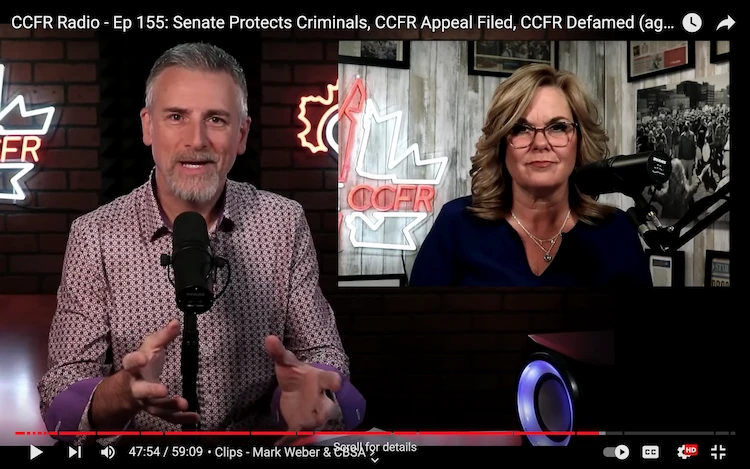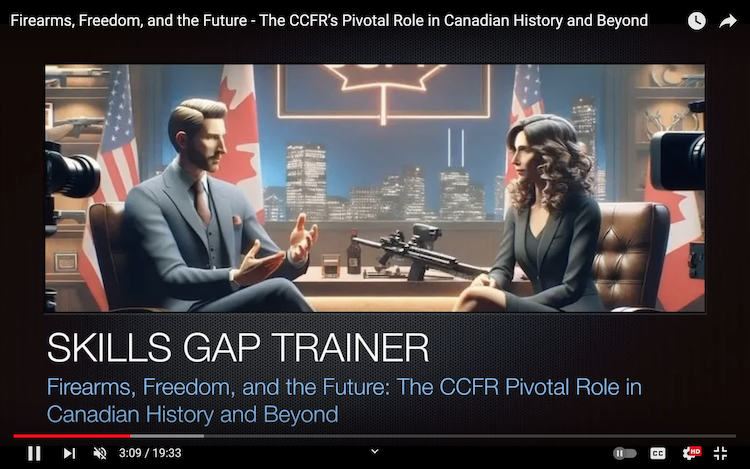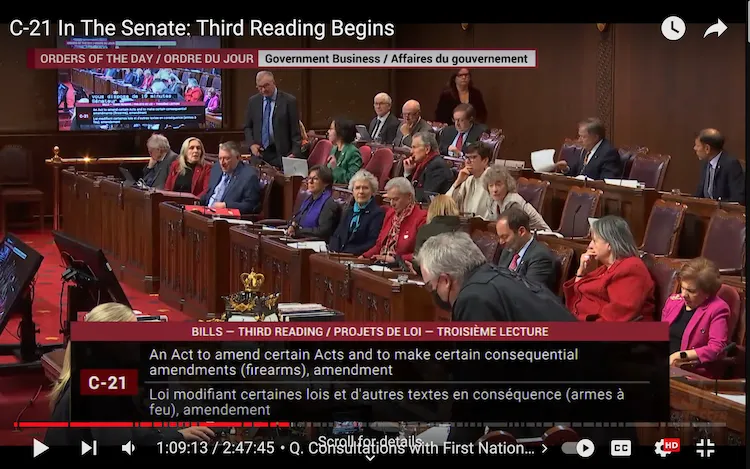Video Title: CCFR Radio – Ep 155: Senate Protects Criminals, CCFR Appeal Filed, CCFR Defamed
Link: https://youtu.be/sKqF_BQDsQ8?si=6teGCKdVu3gC8FMO
Video Title: Firearms, Freedom, and the Future – The CCFR’s Pivotal Role in Canadian History and Beyond
Link: https://youtu.be/L5ksvboEQQA?si=CsfSJEqzpYjvJMrH
@skillsgaptrainer “The recent video from the Canadian Coalition for Firearm Rights (CCFR), encapsulated in its comprehensive description, stands as a testament to the organization’s professionalism and attention to detail. This video, along with the entirety of the CCFR’s media output, showcases thoroughness and precision that often exceeds even that of large corporate video posts. The text accompanying the video is a carefully crafted, detailing every aspect of the content, at every point in time, with precise text for every time point, and comprehensive coverage on various social media platforms and other insightful snippets.
Central to the CCFR’s narrative are Rod Giltaca and Tracey Wilson, both real world and digital world firearm gladiators in the realm of firearm education, rights & shooting :). Their battles are waged not only in the digital world but also in the physical reality of ranges and political arenas. They stand resolute against challenges posed by national politicians, and against bad policies that might be pushed by international corporate alliances and other foreign influences that often seek influence in national public policy issues, and geopolitical dynamics that can have vested interests to seek to maintain weaker political figures in power in Canada. The dedication of the CCFR team to advocate for firearm rights and freedom is not just profound, but tenacious in its intensity and perpetual focus.
The CCFR’s media channel is very special, not simply due to the view counts of 15.5 million views for an organization with a small staff count in a small population country like Canada, but due to the fact that it’s an education show first, and education channels are harder to grow than entertainment oriented video platforms and yet CCFR is successful on YouTube. But far more importantly, the CCFR is very special because it uniquely penetrates Canada’s “media hierarchy system” or the “invisible shield box that can easily exist on establishment determined unfavourable media topics,” reaching the public on the crucial historical topic of “firearm education”. This achievement is significant, given the lack of exposure to “firearm education” throughout the entire lifetime of Canadian citizen’s lives from “official education sources”, “state media funded sources”, and until recently, even from “web site sources”. The CCFR’s persistence and determination in educating the public about firearms are likened to an “Olympic Gold Medal achievement” in “Canada’s Firearms Education sector”. The CCFR’s role as the sole significant educator, with significant reach, in this domain is emblematic of their unparalleled commitment to uncovering and sharing a vital part of Canadian identity and history, previously obscured, ignored or intent-fully and covertly suppressed.
This commitment gains further significance when considering the deep historical roots of Canada in relation to firearms. The narrative of Canada, from its initial habitation by Indigenous peoples to the establishment of colonies by the French and British around the end of the 1500s and the start of the 1600s, is intrinsically linked to the history of firearms. Firearms have been a part of British history since the 14th century, and France has used them since the same era. Many other Europeans who immigrated to Canada came from countries with rich firearm heritages, spanning hundreds of years, such as Czech or Italians. The history of firearms began in China in the 10th century, and their use in India dates back to the 15th century. Canada began building firearms in the 1830s. This extensive historical backdrop makes the modern Canadian context, where only two individuals on the CCFR show, are able to have a bit of reach in Canada on this crucial topic, while impressive they circumvented the secret barriers to inform the public of critical public safety and national security information, this is all still very puzzling and concerning. It suggests a possible covert suppression of the subject of firearms, a thread that runs deeply through the history and identity of the peoples of Canada, of the Europeans, of Indians, of Chinese and of many nations throughout the world.
Rod and Tracey, through the CCFR, do more than just educate about firearms. They strive to ensure the transference and continuation of a global culture, deeply intertwined with the history of firearms, into the future. Their efforts “of historical transfer, cultural transfer, philosophical transfer of the past to the future” position them as more candid and representative citizens of any nation on Earth than the current leaders of Canada, the Liberal Party, which under the current leadership, are preventing the cultures of the nations of Earth, which live in Canada, to move forward in time as part of a tapestry of cultures of being Canadian. While Canadian and global leaders may see themselves as shaping a global identity for Canada, they are poor designers and poor engineers of identity and culture. These things are designed organically and in a grass roots fashion. The erasure of the diverse and shared firearms histories of the citizens that form Canada, represents a dangerous form of cultural engineering. The true essence of combining stories from different cultures is to preserve and honour each narrative, creating a rich, diverse mosaic of history and identity, preserving shared and unique knowledge from each culture. In this context, Rod Giltaca’s and Tracey Wilson’s work with the CCFR embodies a fight not just for the interest of Canadians, but for the preservation of the histories and identities of nations across the globe, which were the original source of the composition of Canada.
The CCFR’s fight is a critical reminder of the importance of maintaining the shared histories and cultures that have come to Canada. The shared aspect of firearms history, use, and culture is a vital component of this narrative, giving a complete sense of the firearms education that is essential for understanding the past of diverse cultures, and shaping the future. The work of the CCFR is a call to action for the people of Canada, and the world, to recognize the importance of this shared history and to support the efforts to preserve it. An attack on the firearms history of Canada, is an attack on the history of every nation’s culture and history on Earth.
The Canadian Coalition for Firearm Rights (CCFR) demonstrates a profound commitment to preserving the intricate identity, capabilities, philosophy, and history that define Canadian culture. Far surpassing mere advocacy for firearm rights, the CCFR’s mission represents a pivotal battle to uphold the rich cultural heritage of a nation founded on a mosaic of shared and diverse histories and traditions. In a world increasingly reliant on unsustainable urban living, perpetually on the brink of global debt wave caused economic depression, or catastrophic failure scenarios of supply chain disruptions, pandemics, cyberattack potentials, global systemic banking system failures, sovereign debt bubbles, hyperinflations, fifth generation proxy wars, AI species dominance threats, demographic declines, socialist nation state subversion attempts, trade wars, uncontrolled interest rate rises, economic wars, foreign influence, parliamentary capture, electric grid down catastrophes, energy scarcity failures, climate change fires, or nuclear war potentials, and other widespread resource scarcity, water scarcity, land fertility drops, rapid standard of living declines, widespread family creation failures, emergence of unelected global dystopian governance structures and alliances, our society risks losing its connection to the rural roots, rural sustenance, life giving rural resilience systems, and the primal life force of the land and sincere and innocence character building of rural life.
Similarly, as humanity drifts further from its historical ties to firearms – an essential element of our shared past, and the essence of what makes us human, intertwined with survival, independence, and self-reliance – we risk losing yet another crucial facet of our identity. This detachment from our firearms heritage threatens to erode our collective soul and the values that define who we are as a people. It diminishes the respect and authority projected by our leaders, towards us, and erases our role as active participants in emergency management, public safety, domestic security and national security. The loss of this connection undermines our ability to protect our families, our neighbours, our countries, and our way of life, ultimately relinquishing control over our physical and spiritual destiny. As we move away from a society where humans actively steer their future, we risk ceding our freedom and the ability to shape humanity’s role in the world’s unfolding narrative, forced to follow along to the demands of the increasingly few or of things.
In modern Canada, the CCFR stands as a stark contrast to the prevailing trends of cultural homogenization. Further, the CCFR’s defence of firearm rights, is primary action required to defend the uniqueness of the cultures of the planet and the capacity to bridge a harmonious multi-cultural nation. Their efforts highlight the importance of understanding and preserving the intricate histories and identities that have shaped Canada. This is not just a matter of honouring the past; it’s about recognizing the shared threads that unite the diverse communities within the nation.
Does the federal government, or do senators from SECU or SECD, genuinely believe that Canada will have experts in the future who will maintain a passion for learning about firearms history over future decades and centuries, without the practical experience of sports shooting, hunting, soldiering, or policing to complement their knowledge, and to help as activities to carry the knowledge of the past into the future? Mere theoretical learning, devoid of hands-on practice, risks relegating even the most comprehensive books on the subject to oblivion.
The CCFR’s battle against the erasure of firearms transcends a mere struggle for a specific right; it represents a profound fight against the annihilation of a shared cultural heritage that spans the breadth of humanity. This battle is about preserving the core of our human identity, protecting the collective bonds formed through our shared history with firearms and the conflicts we’ve endured. Our connection to this past is pivotal; without it, the future of our species stands on uncertain ground. The recent decline in cybersecurity standards, a world of IT systems without real security for 30 years, is a stark reminder of the perils of neglecting conflict comprehension, alongside the erosion of physical security measures in nations across Europe only to be taught a lesson of real geopolitical understanding by Russia, serve as cautionary tales. These are the consequences of a naïve, utopian illusion propagated by immature leadership in Canada and the broader Western world, driving us to a critical juncture of a global madness wrapped in illusion, a place where reality and maddening thoughts converge. We are confronted with a choice: to either assert ourselves as the architects of our destiny, actively shaping the trajectory of humanity, or to witness the erosion of the fundamental elements of our identity and security, risking the loss of our role as the guardians of our future and guardians of the universe.
The role of firearms in history is not just about weaponry; it’s about the stories of freedom-seeking, nobility, fighting spirit, character and resilience that are common to all cultures. Without this character, a character built upon firearms education, all economies and all societies are destined to fail. These stories, which include the histories of martial arts and military arts, police science, and the struggles against tyranny, form an integral part of the human experience. The CCFR’s or SGT’s commitment to educating about this aspect of history is a commitment to preserving the very essence of what makes us human.
The SGT’s call to action – to vote for Canada, vote for the CCFR, vote against Liberal Party, against Censorship Bills, vote against Bill C-21, vote against May 2020 OIC, vote for the people to have a future and to be enabled by law to make a future for everyone, not just for 10% to have a future in this world – a powerful reminder of the responsibility we all share to preserve our essence, and even to preserve our lives and right to live. It’s a call to remember our roots, to honour the histories of the countries and cultures that have come together to form modern Canada. It’s a rejection of the notion that progress means erasing the past, as per the recommendation of the Liberal Party leadership. We are not an airport as these “global leaders” envision. We build airports, as we envision, as we are the talent and we are the ones that make the world soar. The global leaders just use our tools to soar and people can do this by championing the idea that true progress involves integrating and celebrating the rich diversity of our shared history, being careful not to remove shared or unique aspects.
Rod Giltaca and Tracey Wilson, through their leadership in the CCFR, have emerged as global citizens fighting for the freedom not just for Canada, but for everyone. Their work goes beyond the scope of national interest; it’s about safeguarding the history and identity of all nations, as firearms education is a global education. In a world where leaders often fail to recognize or value this global responsibility, Rod and Tracey stand out as true champions of global heritage.
Their commitment is a stark reminder of the role small groups or even one or two individuals often play in preserving history and culture, far more than 5 million highly paid people put together in our entire government, and they went against national and global heritage, history ad humanity’s essence. Against the backdrop of national and geopolitical giants without much thought about heritage, history, philosophy or education, and with suppressive algorithmic forces to deal with daily, the CCFR’s & SGT’s fight to educate about firearms or humanity, is a fight to tell future generations about who we are today and who our ancestors were, and who we can be as a global and space faring species. This is a fight for the very soul of humanity, for the technology of humanity, and for the design of the 21st century governance of people, and how much value they are going to choose to have or to fight for to have and keep, ensuring that the diverse and rich stories of our past are not lost to time or political agendas.
In a hypothetical scenario where Canada faces a decline under current leadership, the enduring legacy of the CCFR, embodied in Rod and Tracey, becomes even more critical. They represent a timeless piece of Canada, a beacon of truth and cultural integrity that could survive even the most drastic changes.
The fact that the CCFR, with its relatively small scale, of two public speakers, has managed to produce a significant body of work, reaching millions, raises important questions about the driving forces behind such dedication. Their work is not for personal gain or business profit; it is driven by a deeper, more profound motive – the protection of Canadian culture and freedoms. This dedication is especially significant against the backdrop of legislative discussions around Bill C-21 and the May 2020 OIC.
The true heroism of the CCFR, and especially of Rod Giltaca and Tracey Wilson, lies in their commitment to the advancement and safety of a civilization. Their efforts are a noble pursuit, safeguarding the liberties and future of not just Canada, but of humanity as a whole. The CCFR, through its actions and educational endeavours, stands as a testament to the power of dedication, courage, and the resolute pursuit of truth.
In recognition of their unwavering commitment and invaluable contributions, there emerges a compelling case for nominating Rod Giltaca and Tracey Wilson of the CCFR for an honor that transcends national boundaries. Their tireless advocacy for the preservation of historical truths and cultural heritage in the realm of firearms education positions them as deserving candidates for citizenship in any country they desire. This proposition is not just a token of appreciation but a testament to their global impact. They have not only defended the historical narrative of Canada but also championed the cause of all nations whose histories intertwine with the legacy of firearms. In their rebellious act of fighting for the freedom of humanity, Giltaca and Wilson have undertaken what may well be considered the most crucial obligation of contemporary leadership — safeguarding the transference of identity and cultural integrity into the future. It is often individuals like them, rather than large institutional entities, who courageously stand against the tides of geopolitical challenges to preserve essential elements of our global heritage. As Canada navigates its future under its current leadership, the timeless contributions of Rod and Tracey become ever more critical, embodying a beacon of truth and cultural integrity that could fortify the essence of Canadian identity against any challenge it may face.
In conclusion, the Canadian Coalition for Firearm Rights, under the stewardship of Rod Giltaca and Tracey Wilson, is a guardian of cultural heritage and freedom. As is SGT. The CCFR stands as a towering figure in the landscape of Canadian culture and history. Their dedication to educating the public about firearms and their role in our shared history is not just a service to Canada but to the world. Their efforts to educate and advocate for firearm rights go beyond national boundaries, serving a larger purpose of preserving the rich, shared and diverse history that forms the foundation of our national and global society. They are not just champions of Canada but champions of the world, fighting to ensure that our collective history and the lessons it holds are not forgotten but carried forward into the future. They champion a cause that goes beyond the mere advocacy for firearm rights; they fight for the preservation of a rich, diverse, and shared history that is fundamental to our identity as Canadians and as global citizens. Their work is a hope and signal to all who value freedom, history, and cultural integrity to know what it is to be Canadian. They demonstrate what it is. – SGT Team :)”
“PS: Thanks for being very good Canadians, Rod & Tracey.”
Related Content:
Video: C-21 In The Senate: Third Reading Begins
 in combat sports at the range, will make a society of weak men. These future weak men will not handle psycopaths, killers and AI systems, but they will be handled by these entities and others. These future weak men will not rise to overcome the greatest dangers, dangers so great, that no human in history has ever faced. How do we make the SECD Senators understand that they did not even read the book covers on the intellectuals around the world who have predicted dangers and crises in the 21st century? And have published hundreds of best sellers on future crises in the great Amazon book library. How do we convince the SECD to vote for people they don’t identify with, know, or understand. If no one in Canada can teach the SECD senators to allow semi-rifles for sports shooting like IPSC or 3-Gun, and hunting, who can? Who can teach the unteachable student? Why in Canada exist people who do what the group says, but not what the trained next generation experts outside of government says. SECD Senators, the Greek Gods of Achilles, Hercules, Athena, Ares and Perseus speak through me today, and through my gaze, looking at your protection or lack of protection for your people. The statues have stood mighty for 2000 years, specifically for the day when you had to vote on IPSC and sports shooting, and you messed it up. These statues will be here long after we are all gone since you let the best part of the human spirit remain unnurtured by the spirit of IPSC. I will never forgive u SECD if you dont fight for IPSC and semi rifles in sports.
in combat sports at the range, will make a society of weak men. These future weak men will not handle psycopaths, killers and AI systems, but they will be handled by these entities and others. These future weak men will not rise to overcome the greatest dangers, dangers so great, that no human in history has ever faced. How do we make the SECD Senators understand that they did not even read the book covers on the intellectuals around the world who have predicted dangers and crises in the 21st century? And have published hundreds of best sellers on future crises in the great Amazon book library. How do we convince the SECD to vote for people they don’t identify with, know, or understand. If no one in Canada can teach the SECD senators to allow semi-rifles for sports shooting like IPSC or 3-Gun, and hunting, who can? Who can teach the unteachable student? Why in Canada exist people who do what the group says, but not what the trained next generation experts outside of government says. SECD Senators, the Greek Gods of Achilles, Hercules, Athena, Ares and Perseus speak through me today, and through my gaze, looking at your protection or lack of protection for your people. The statues have stood mighty for 2000 years, specifically for the day when you had to vote on IPSC and sports shooting, and you messed it up. These statues will be here long after we are all gone since you let the best part of the human spirit remain unnurtured by the spirit of IPSC. I will never forgive u SECD if you dont fight for IPSC and semi rifles in sports. And neither will the people of the future, like me (or the statues
And neither will the people of the future, like me (or the statues  )”
)”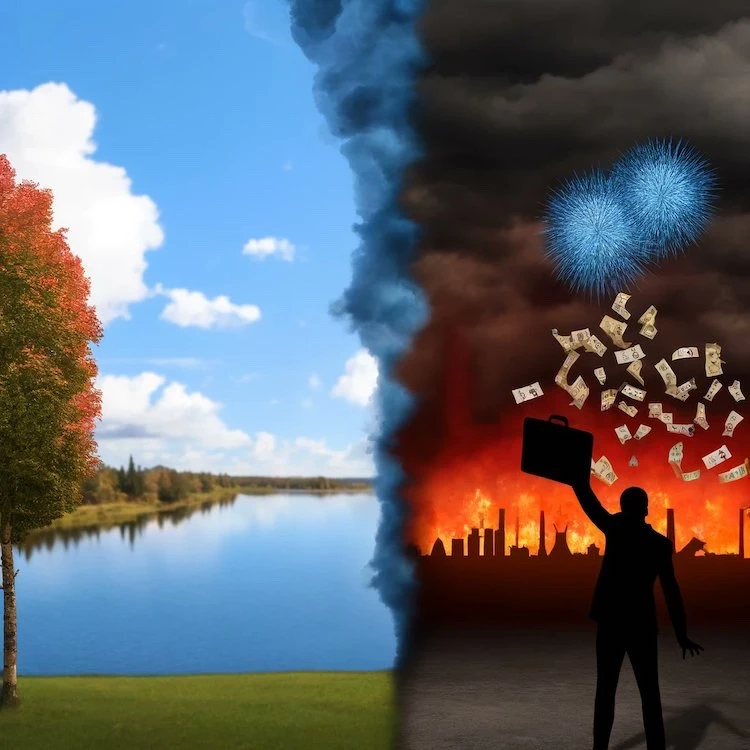
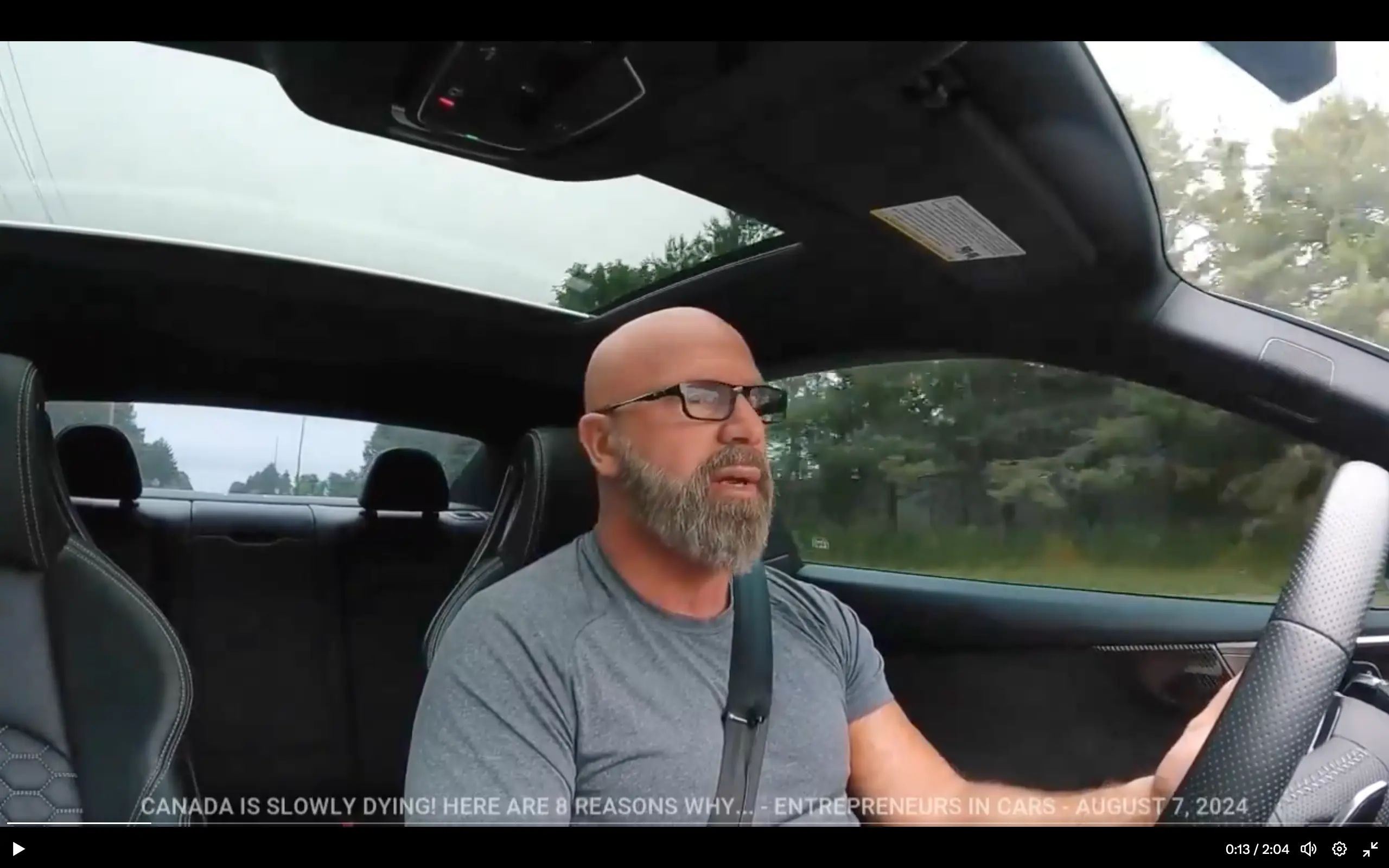
Related Books:
“Arming and Disarming: A History of Gun Control in Canada” by R. Blake Brown: This book offers a comprehensive history of gun control policies in Canada, exploring their impact on society and individual rights. It’s useful for understanding the historical context behind current debates.
“The Illustrated History of Firearms: In Association with the National Firearms Museum” by Jim Supica, Doug Wicklund, and Philip Schreier: While this reference is more global, it provides an excellent background on the development and cultural significance of firearms throughout history, which can add depth to the understanding of Canada’s firearm heritage.
“Guns in American Society: An Encyclopedia of History, Politics, Culture, and the Law” by Gregg Lee Carter: This is another reference with a broader scope but relevant for comparison. Understanding American firearms culture and regulations can provide a contrast to the Canadian experience and foster a deeper understanding of the CCFR’s position.
“Canadian Gun Control: Should the United States Look North for a Solution?” by Gary A. Mauser and David B. Kopel: This book directly compares Canadian and American gun laws and cultures, offering insights that can deepen understanding of the issues at stake in Canadian firearm policy and advocacy.
“Policing the Wild North-West: A Sociological Study of the Provincial Police in Alberta and Saskatchewan, 1905-32” by Zhiqiu Lin: Provides historical insights into law enforcement in Canadian provinces, offering background that can complement discussions on the role of firearms in Canadian history and society.
“Gunfight: The Battle Over the Right to Bear Arms in America” by Adam Winkler: Provides a historical and contemporary analysis of gun rights, offering perspectives that can inform discussions on similar issues within the Canadian context.
To see our Donate Page, click https://skillsgaptrainer.com/donate
To see our Instagram Channel, click https://www.instagram.com/skillsgaptrainer/
To see some of our Udemy Courses, click SGT Udemy Page
“Discover the future of learning with Skills Gap Trainer, where technology meets art, and education transcends boundaries. Our innovative curriculum in AI, blockchain, user experience, digital marketing, and more, isn’t just about acquiring skills — it’s about mastering the art of possibility in a digitalized world. By linking to us, you’re not just sharing a resource; you’re igniting a beacon of knowledge that enlightens paths in technology, leadership, and beyond, for a global community of learners. Join us in our mission to bridge the skills gap and shape the future of education. Together, let’s empower minds across Canada, America, Europe, Britain, India, and beyond. Link to Skills Gap Trainer – where learning meets innovation, and every click opens a door to endless possibilities.“
